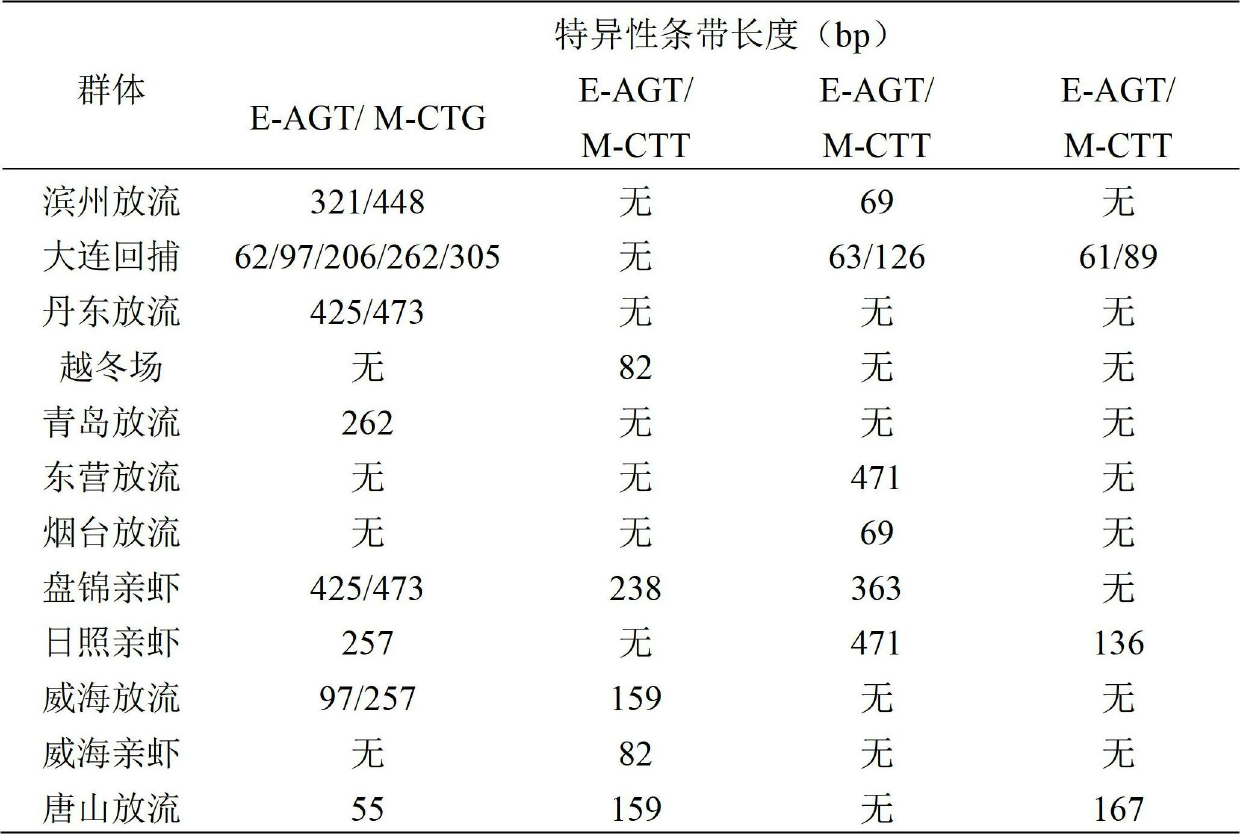Method for identifying Chinese prawn population by using AFLP (Amplified Fragment Length Polymorphism) fingerprint technique
A technology of Chinese prawns and populations, which is applied in the fields of recombinant DNA technology, biochemical equipment and methods, and the determination/inspection of microorganisms to achieve the effect of safeguarding marine rights and interests
- Summary
- Abstract
- Description
- Claims
- Application Information
AI Technical Summary
Problems solved by technology
Method used
Image
Examples
Embodiment Construction
[0015] The experimental methods in the examples of the present invention that do not specify specific conditions can generally be operated under conventional conditions, such as the conditions described in the "Molecular Cloning Experiment Guide" written by J. Sambrook et al.
[0016] In the long-term research, the applicant has screened the combination of primers that can effectively identify the Chinese prawn population through the AFLP analysis of different populations, and uses the primer set of the present invention to identify the Chinese prawn population. The steps are as follows:
[0017] 1. Genomic DNA extraction
[0018] The whole genome DNA of Penaeus chinensis was extracted and stored at -20°C for future use.
[0019] 2. Enzyme digestion reaction
[0020] A total of 20 μL enzyme digestion reaction system: about 100 ng of genomic DNA, 0.1 μL Trul Ι (10u / μl), 0.1 μL CoR I (10u / μl) and 4.0 μL 10×Y+ / Tango buffer, add ultrapure water to 20 μL, and place in a constant t...
PUM
 Login to View More
Login to View More Abstract
Description
Claims
Application Information
 Login to View More
Login to View More - R&D
- Intellectual Property
- Life Sciences
- Materials
- Tech Scout
- Unparalleled Data Quality
- Higher Quality Content
- 60% Fewer Hallucinations
Browse by: Latest US Patents, China's latest patents, Technical Efficacy Thesaurus, Application Domain, Technology Topic, Popular Technical Reports.
© 2025 PatSnap. All rights reserved.Legal|Privacy policy|Modern Slavery Act Transparency Statement|Sitemap|About US| Contact US: help@patsnap.com



